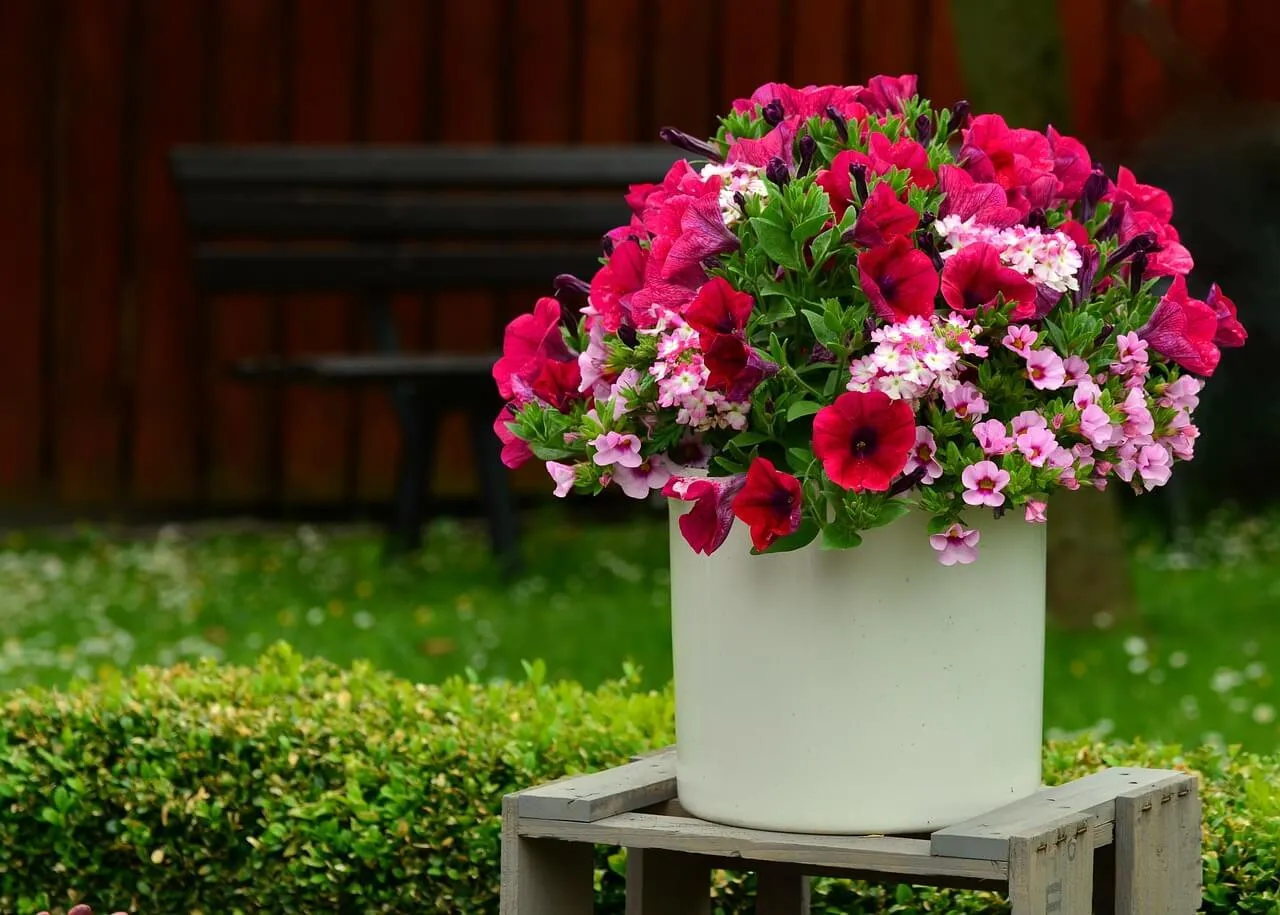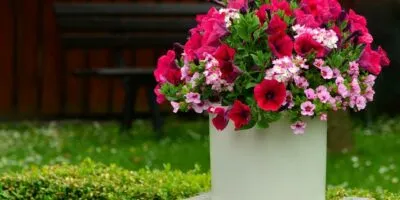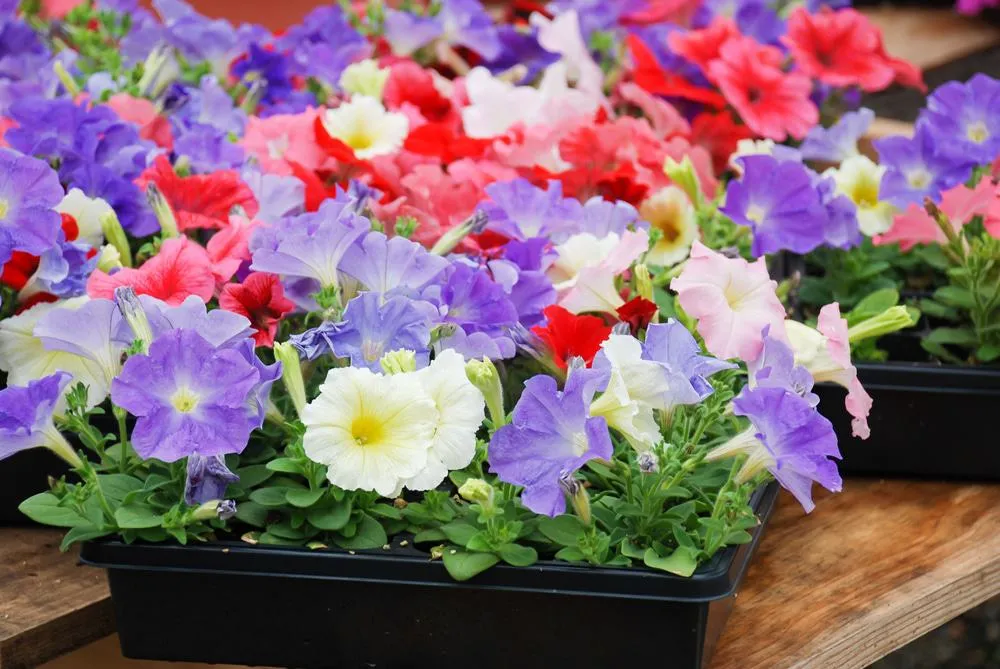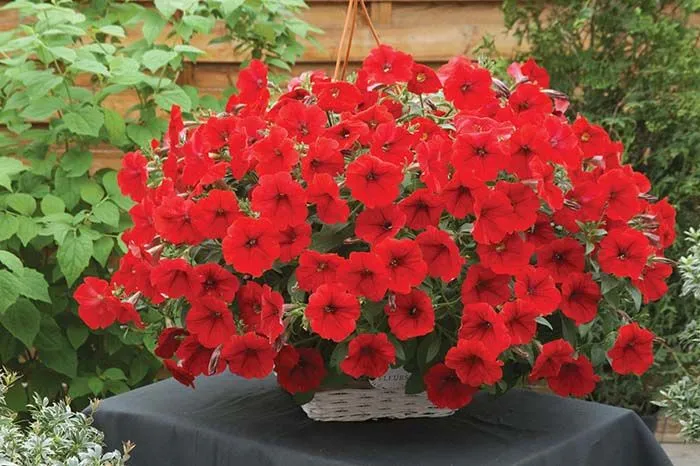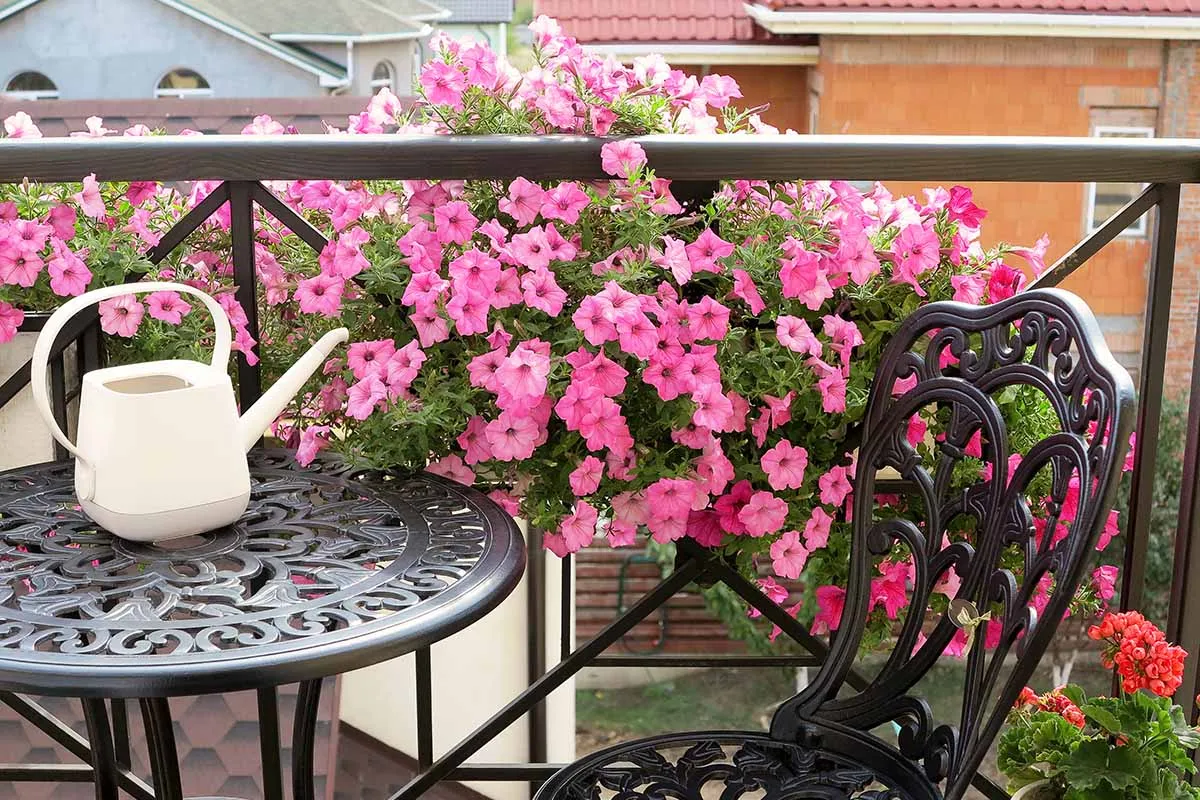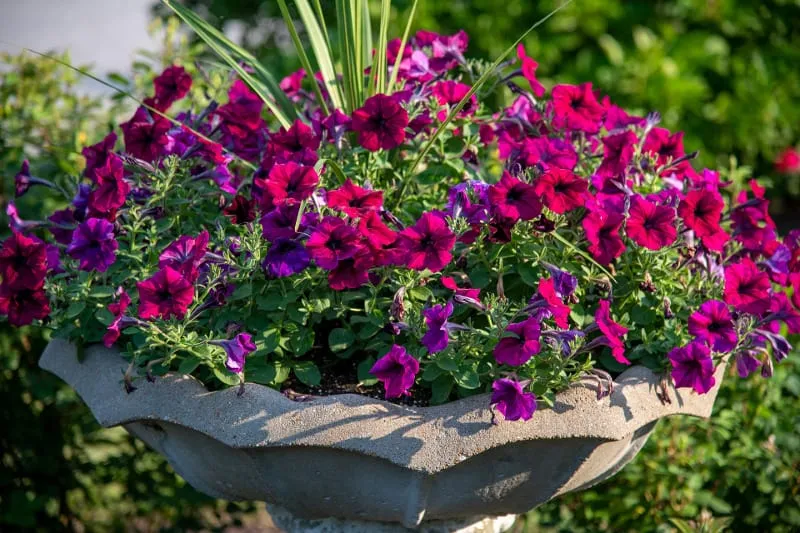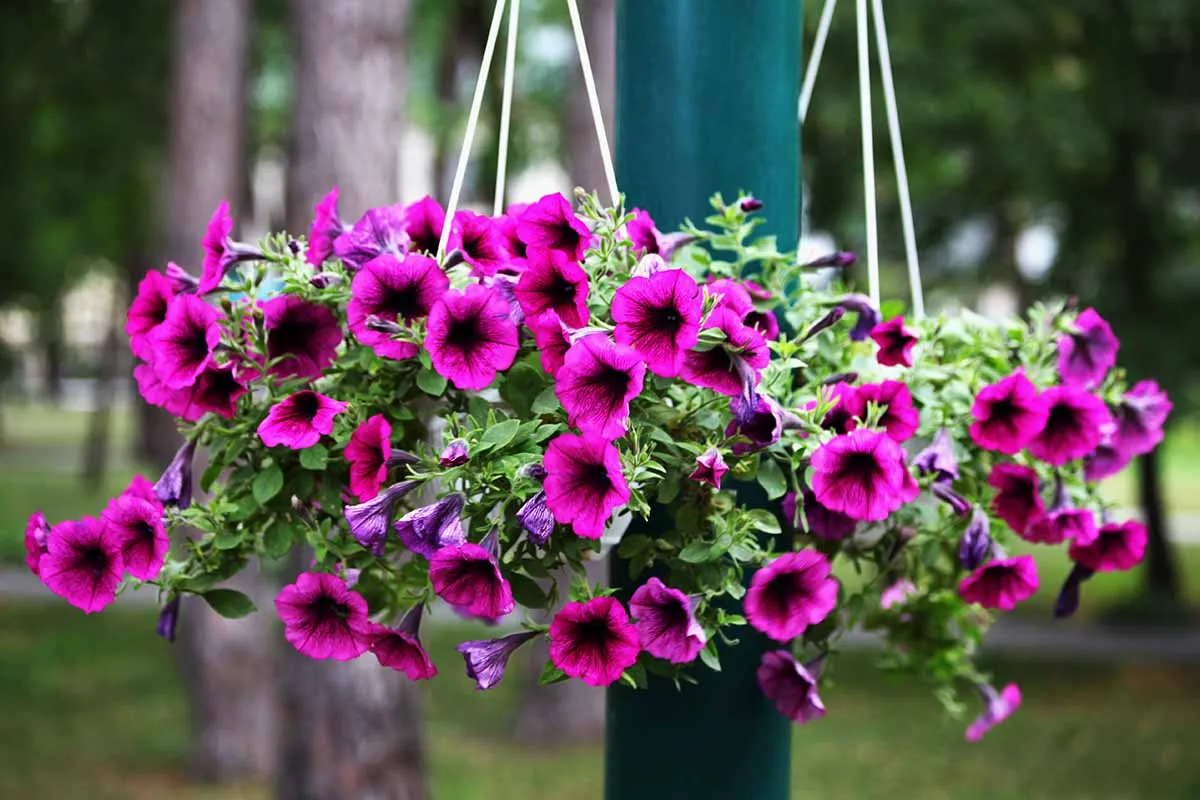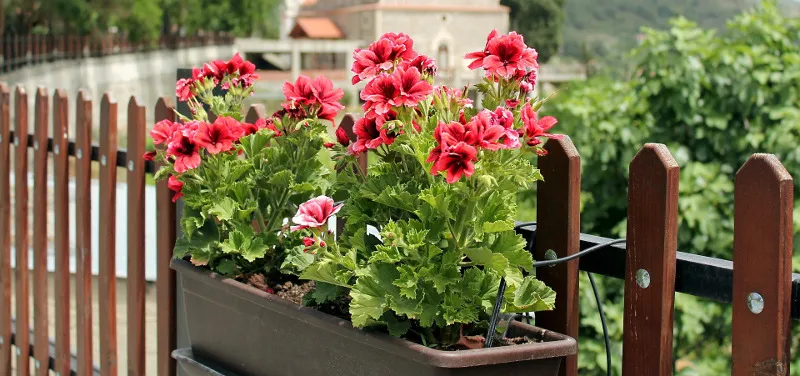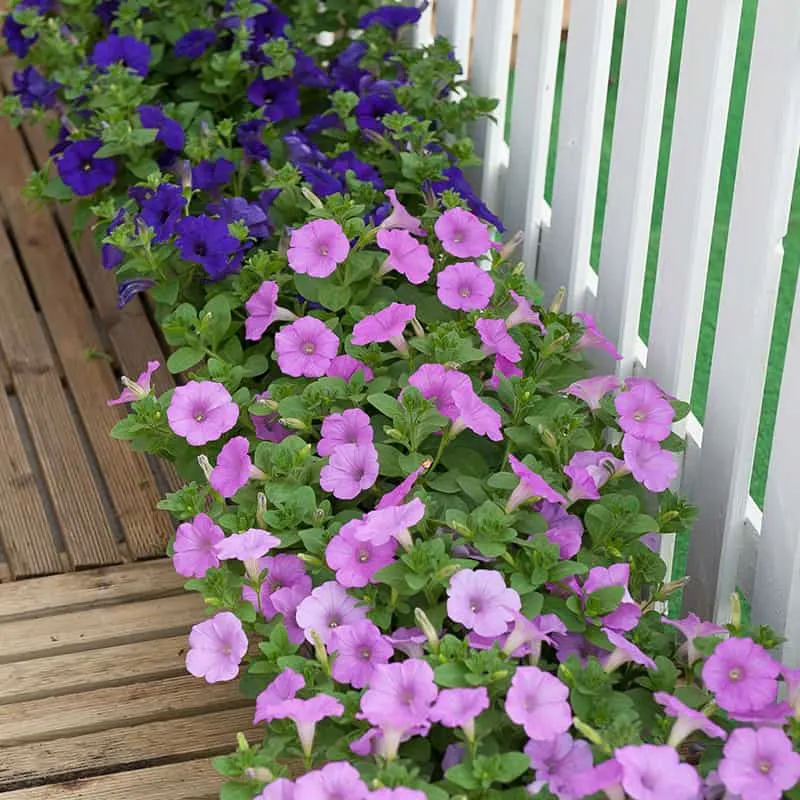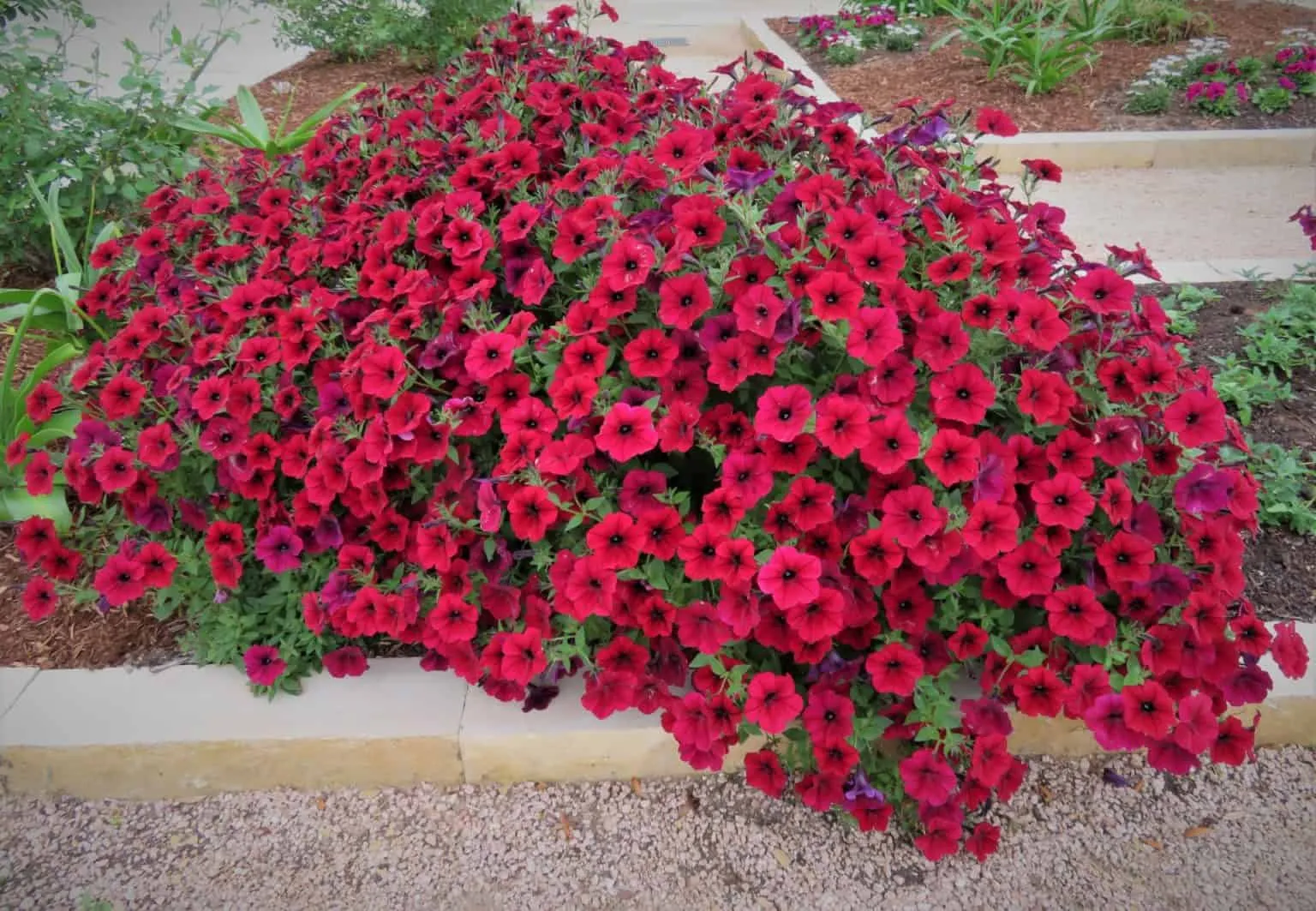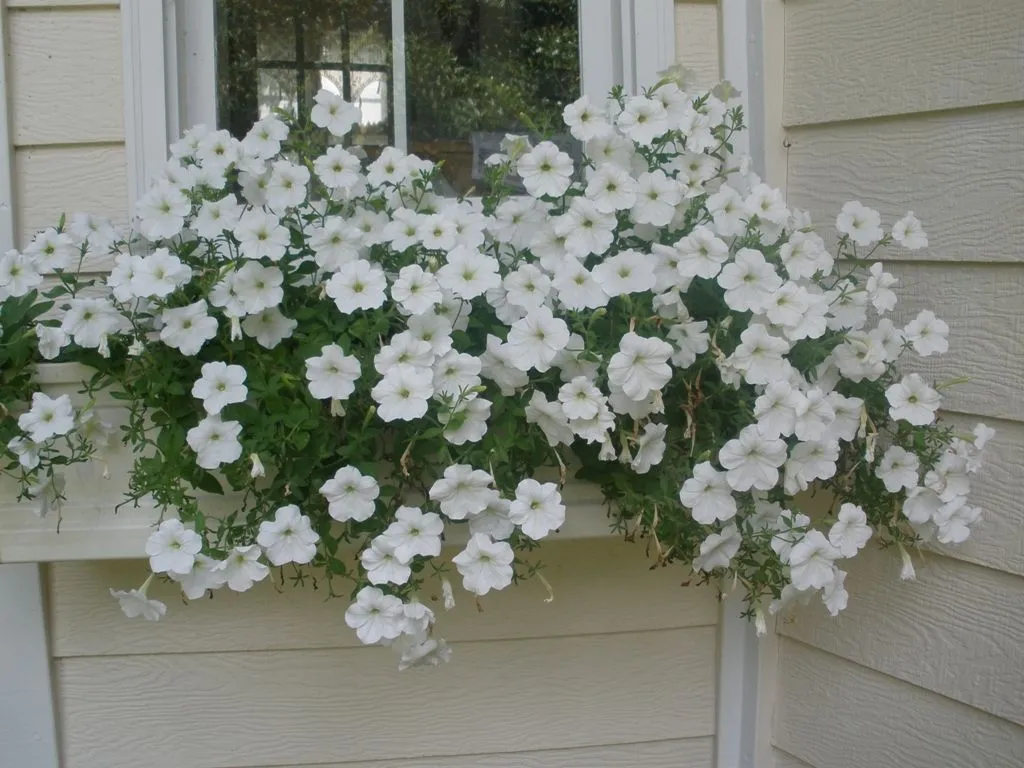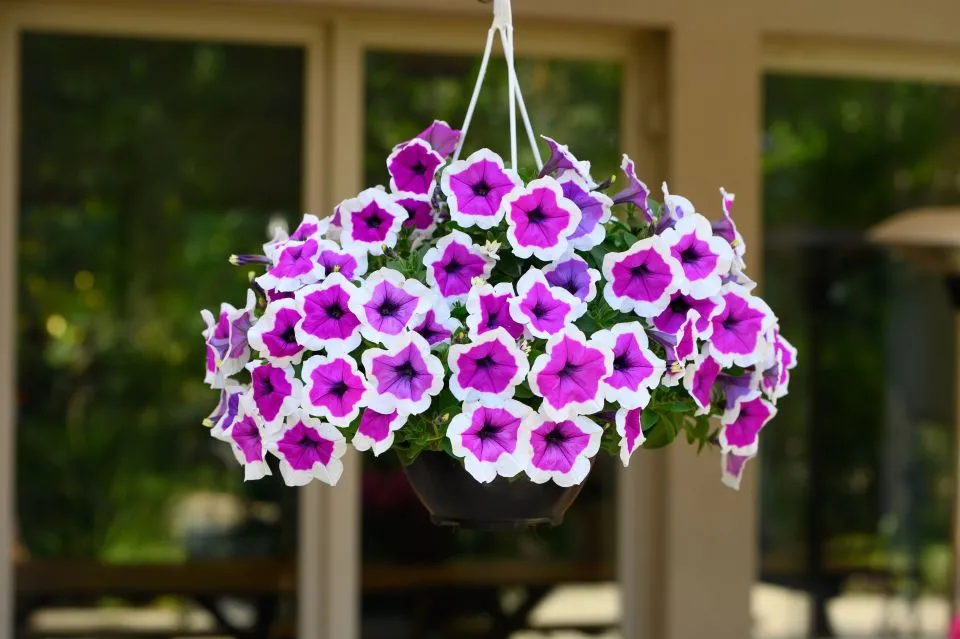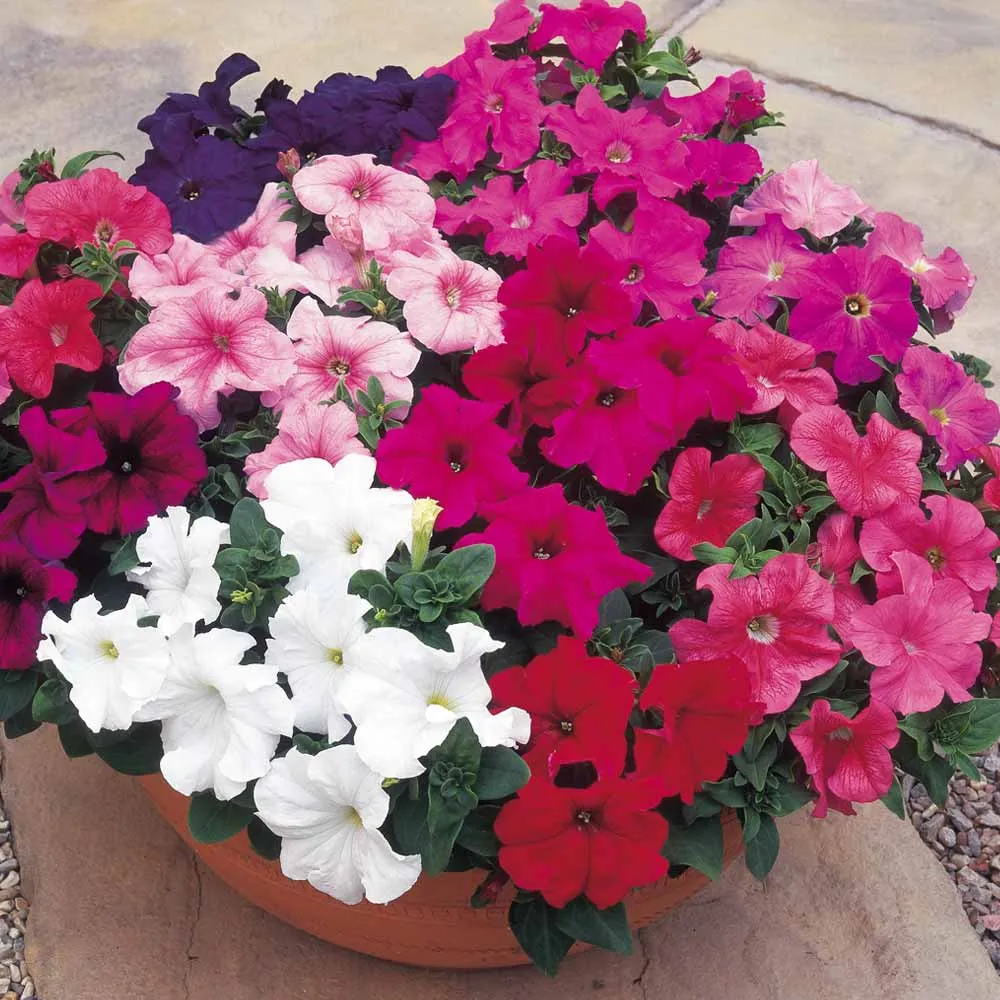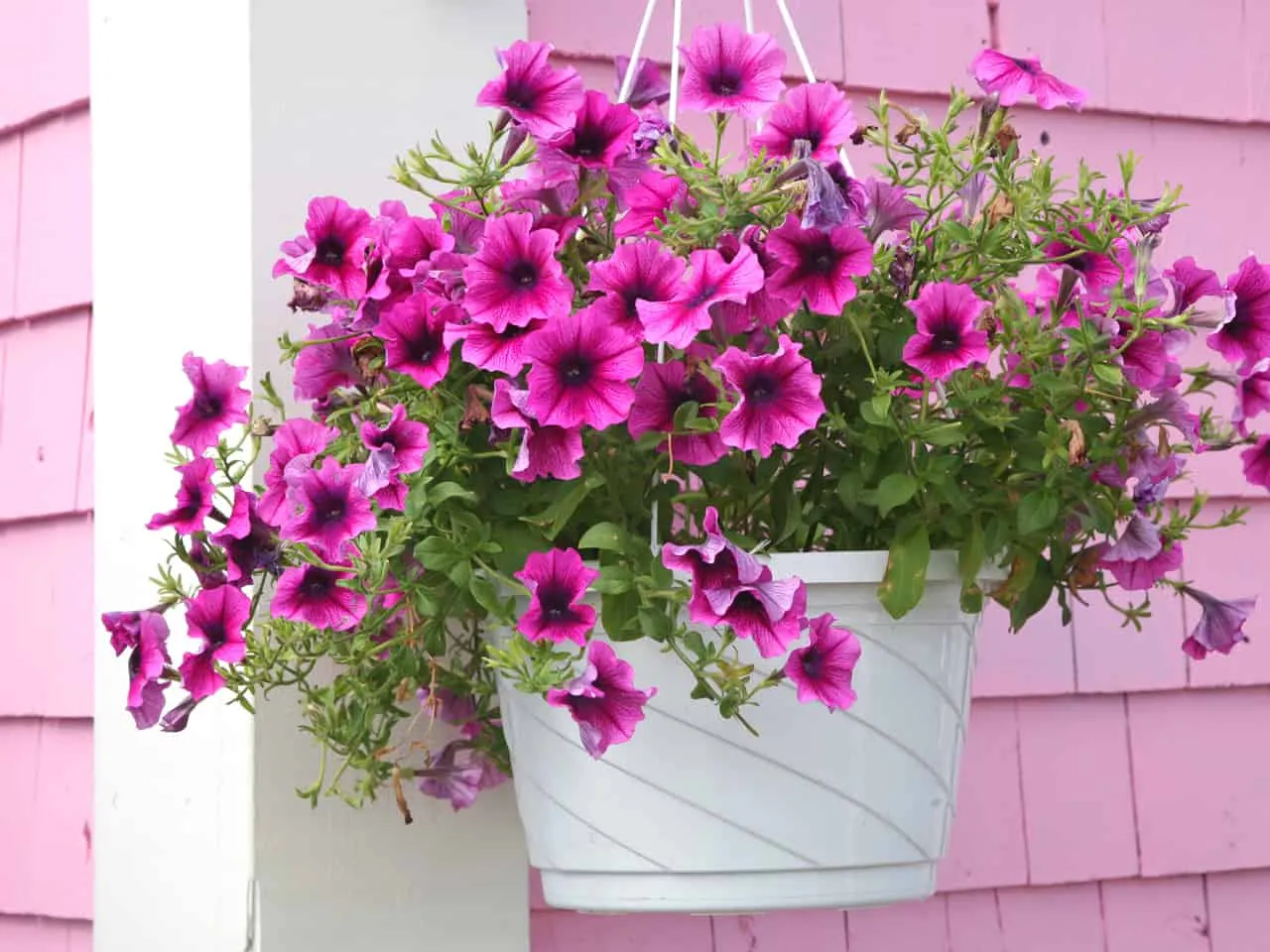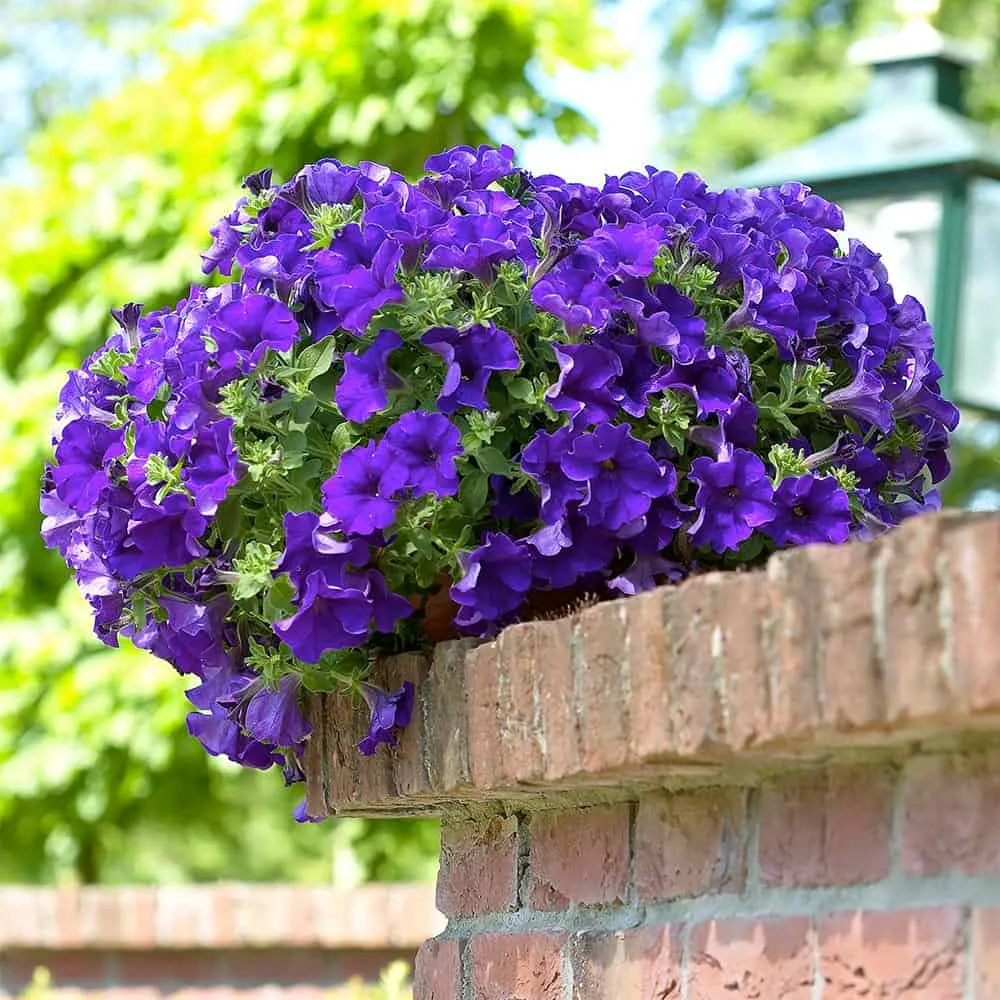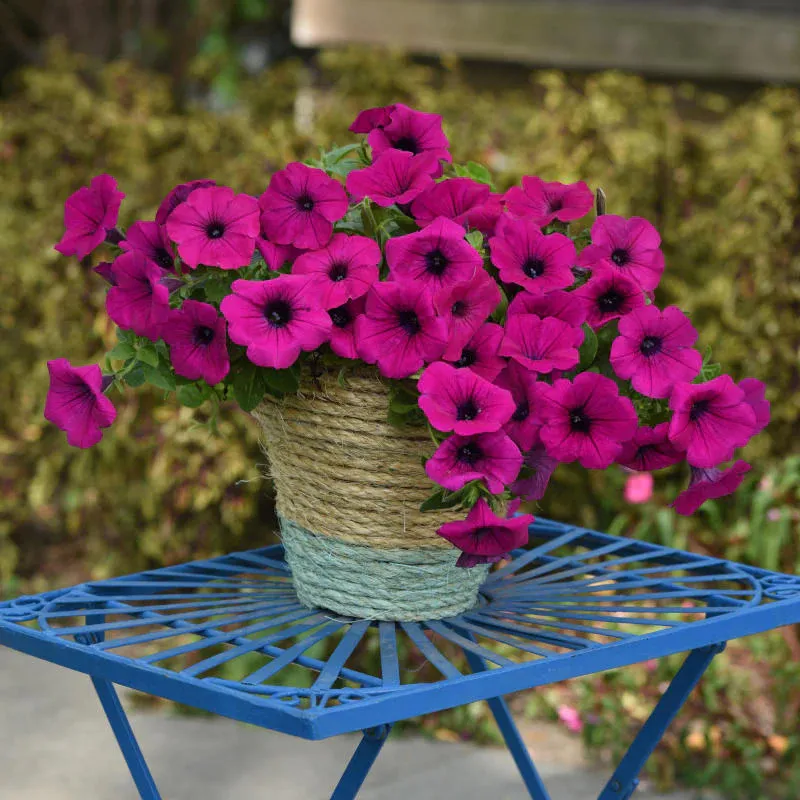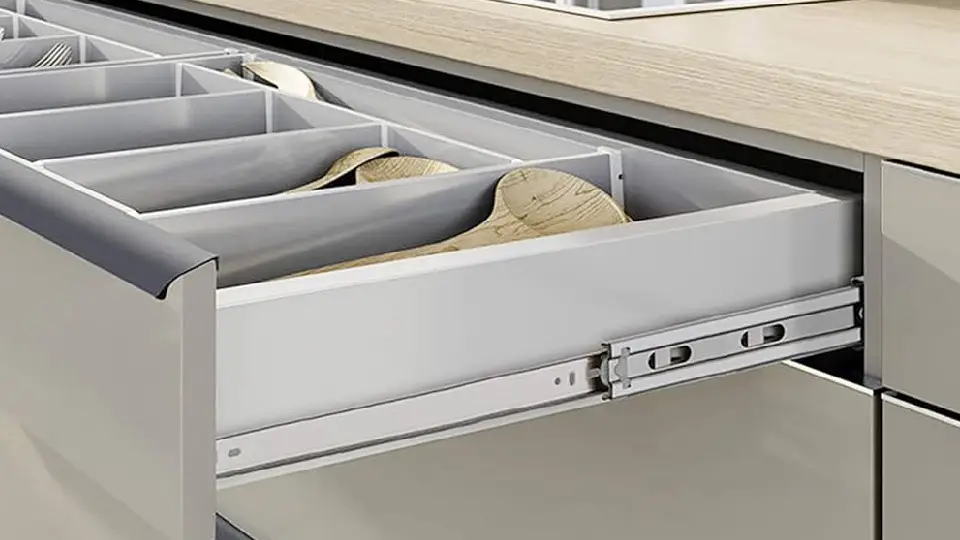Nothing can be as satisfying as decorating your home with flowering plants. There are several possibilities for bringing year-round plants to your house, from Cactus to Snake plant. But sometimes, you want to add brightness and colour! That’s when indoor flowering plants, such as Petunias come to the rescue. Numerous indoor flowering plants are available in the market that may give a touch of colour to any area of your home. Petunias are a great option if you want to add an annual flowering plant to your home. There is a wide range of species in the Petunia genus. They can have single or double blooms, ruffled or smooth petals, striped, veined, or solid colours, mounding or cascade growth patterns, and even a mild scent. However, you must understand how and when to grow Petunia plants if you want them to thrive.
With the right amount of sunlight, water, and fertilization, Petunia plants can blossom all summer long. This article provides detailed information on the various types of Petunias and how to grow them at home. We have also provided decor inspiration in the form of an image gallery of home decorating ideas using these plants.
After reading this article, you will feel confident enough to grow different varieties of Petunias in your garden.
Contents
What is Petunia?
Petunia is a flowering plant genus with 20 species native to South America. It is one of the most widely known garden flowers.
Petunias are large, colourful, prolific bloomers and have trumpet-shaped flowers and hairy, sticky foliage on branching stems.
Common name: Petunia
Botanical name: Petunia Hybrida
Order: Solanales
Family: Solanaceae
Subfamily: Petunioideae
Plant type: Perennial, annual
Height: 6 inches to 15 inches
Flower size: 1-3 inches in diameter
| Also see: Spider Plant: Guide to style, care for & grow indoors (Buy online) |
Different types of Petunias
Petunia #1 – Multiflora
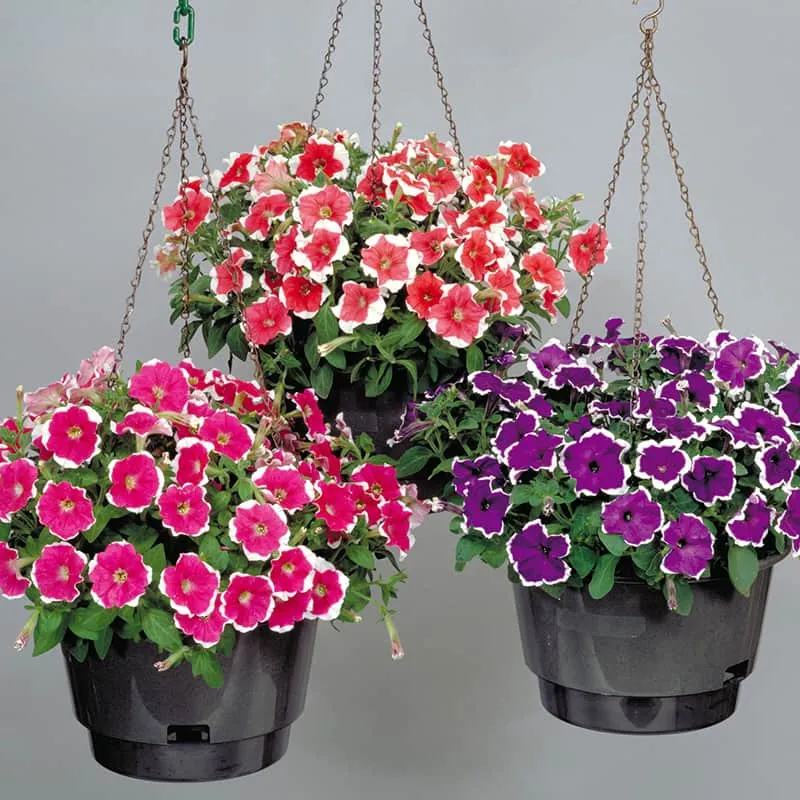
Image Source: Sakata Ornamentals
Multiflora Petunias are small flowering plants with the ability to hold themselves under harsh climatic conditions. These plants begin to bloom in the summer and continue to do so through the end of autumn. Multiflora Petunias grow well in planters as they have a habit of mounding upward. These plants can be grown in a variety of hues.
Petunia #2 – Grandiflora
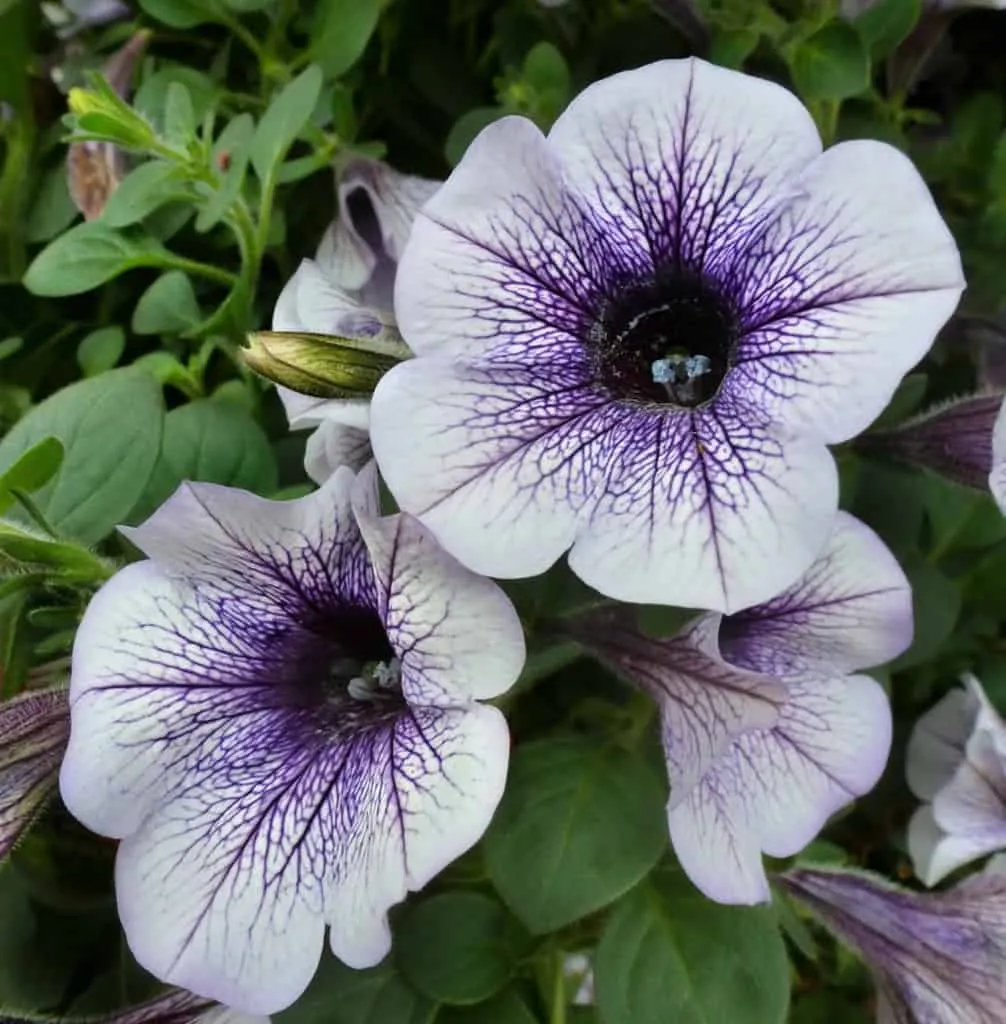
Image Source: Onyx Publication
Grandiflora Petunias are a fantastic alternative to Multiflora if you prefer larger blooms. Their flowers reach a height of 12 inches. One of the best qualities of the Grandiflora variant of Petunias is its adaptability; it grows well in gardens as well as in planters.
One of the issues with Grandiflora Petunias is deadheading in flowers. You must remove each dead flower from your petunia plant for it to bloom continuously.
| Also see: Succulent plants: 10 Best types & tips to grow indoors (Buy online!) |
Petunia #3 – Milifloras
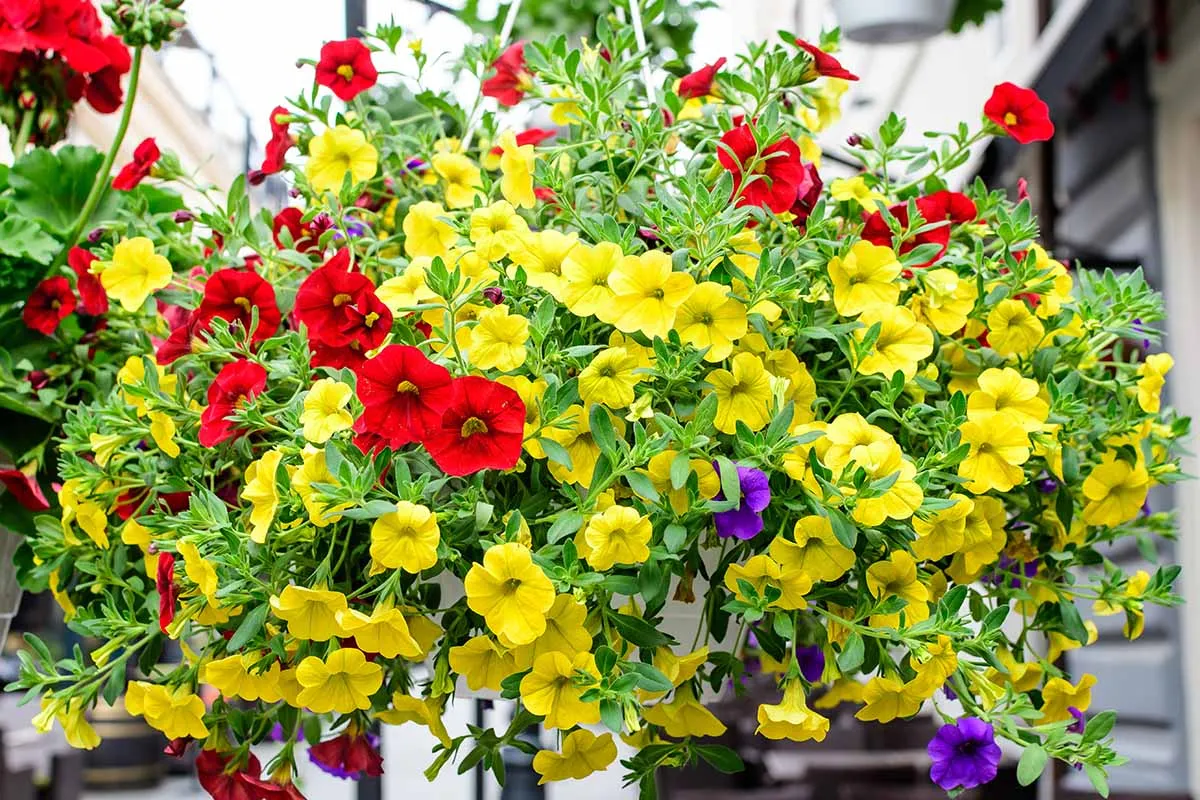
Image Source: Gardeners Path
One of the most popular varieties of Petunias in present times is Miliflora. This Petunia plant has mini flowers, which are approximately an inch in size. However, in the blooming season, these plants get loaded with blossoms.
A common characteristic that Multifloras and Milifloras share is mounding, which makes them ideal for planters. The maximum height and width of growth for these plants are somewhere around 8×8 inches.
Petunia #4 – Floribundas
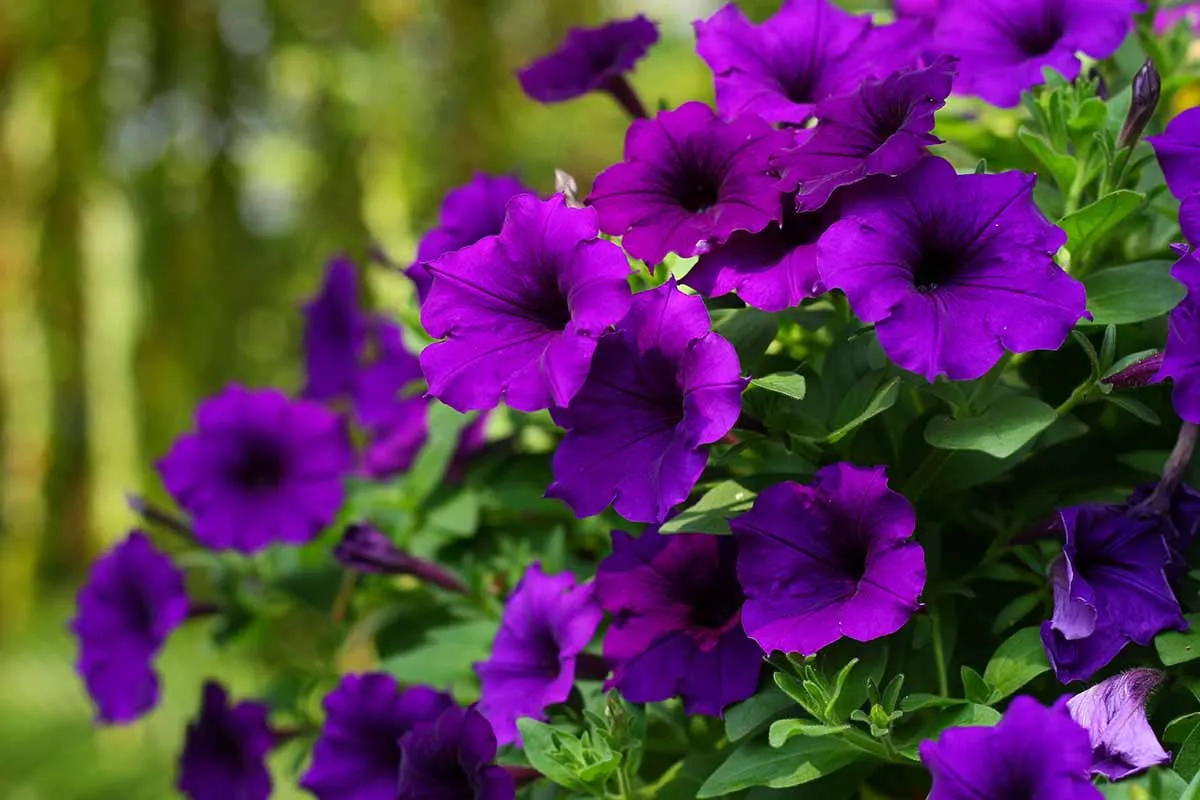
Image Source: Gardeners Path
Floribundas are hybrid Petunia plants that combine the best traits of Grandifloras and Multifloras. Along with a substantial number of flowers, this Petunia also carries strength and weather resistance. They can be combined with other Petunia kinds to make a scintillating Petunia garden. They reach a maximum height of 15 inches and a width of about 12 inches.
| Also see: Money Plants: Benefits, Vastu, growing tips & decor ideas (Shop here!) |
Petunia #5 – Trailing Petunias
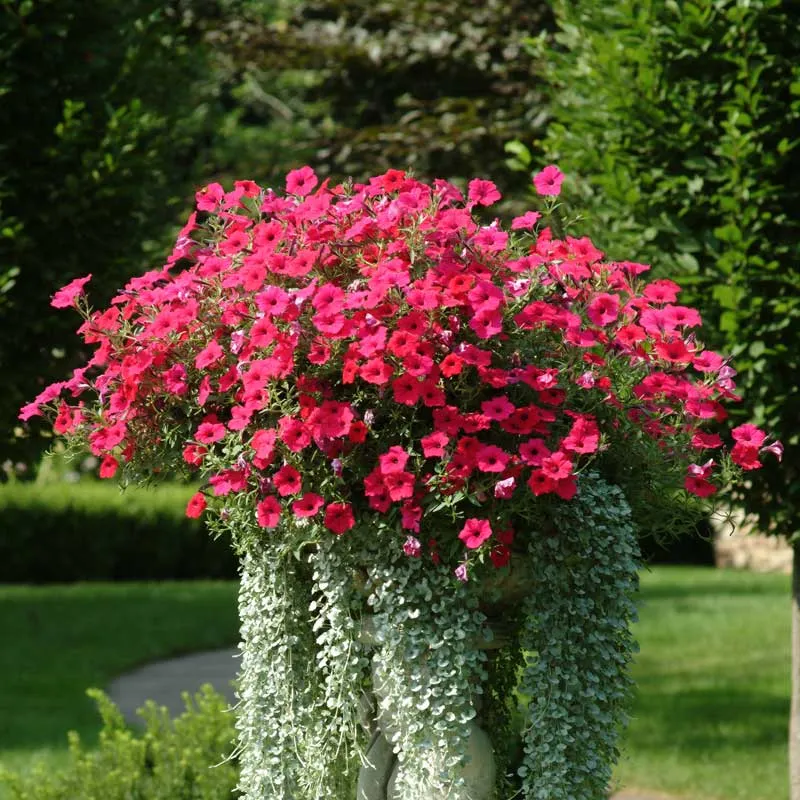
Image Source: Shopify
Trailing Petunias are a low-growing variety of Petunias that spread around 3 to 4 feet. They look amazing in gardens. This type is also ideal if you want to grow Petunia flowers in window boxes or hang them from baskets. You can get these plants in a number of hues.
When to plant Petunias?
This question has multiple answers as different varieties of Petunias are grown during different seasons. If you want to grow Multiflora Petunias, the best time to plant them is during early summer. However, the best time to grow the Grandiflora variety of Petunias is winter. You can easily buy these floral plants or seeds from your nearby nursery during the growing season.
| Also see: Jade plant: Benefits, care, propagation & 26+ decor ideas |
How to grow Petunias?
Process of germination
For Petunia seeds to germinate, you need a humus-rich potting mix. To prepare this humus-rich mix, you can simply use river sand, vermicompost, and cocopeat. The ratio would be 30:60:10. Once the seeds germinate, you can place them in a pot with a mixture of garden soil, river sand, cocopeat, and vermicompost. Use river sand only if your soil is not loamy.
Pots to use
Petunias can thrive in a pot around 8 inches in diameter because these do not have extensive root systems. Any type of container can be used to cultivate Petunias. However, hanging Petunia pots are the most popular.
Prefer seeds over small plants
It is said that starting a Petunia plant from seed is preferable to buying one that has already grown. The explanation for this is simple, by purchasing seeds, you can be sure that they are of the highest quality. With plants, on the other hand, you can’t be certain of the quality.
Pro Tip: Don’t cover the seeds of the Petunia plant while they germinate, as they need light to germinate properly.
Petunia caring tips
Petunias love sunlight, so for them to grow well and bloom, you must make sure that they receive ample sunlight. You must water them at least once a week, no matter whether you grow them in pots or gardens. Petunias require fertilizer in large amounts. You can use a good water-soluble fertilizer to feed them. This will ensure their blooming for the season. For bigger Petunia varieties like Grandiflora, removing deadheads is crucial. Once you remove these deadheads, the plants can easily bloom again. You can simply pluck the dead flowers with your hands, and the process of blooming will start again.
Protection from pests
Aphids, flea beetles, and snails that feed on the stems and leaves are some pests that may harm Petunia plants. Normally, you can spray water on the plants to get rid of bugs. However, you can use an insecticide if the infestation becomes severe and delays flowering.
Frequent watering
If you are unsure of the amount of water in the soil of your planter, simply touch the soil to see whether it needs to be watered. It’s always better to underwater your plants than to overwater them as a plant can recover faster from water distress as compared to water excessiveness.
Pruning the overgrowths
You also need to prune some Petunia varieties at times. It’s normal for trailing Petunias to grow large stems because they are made to grow that way. However, if a Petunia plant of a variety like Grandiflora or Multiflora grows such large stems, you need to trim them. You can use gardening scissors for this purpose.
Monthly dusting sessions
You must make sure that the leaves and flowers of your Petunia plants don’t get clogged completely with dust. If this happens, it can make your plant die without sunlight. You can simply use a damp cloth to wipe the leaves at least once every month.
Drainage for the plant
If you are using a plastic pot for your Petunia plant, make sure that the drainage hole is not blocked. Plastic is not porous, and the only way for the water to drain in these pots is through the drain hole, therefore, take care of this. If, for any reason, you need to re-pot your Petunia plant, do this very carefully; a slight mistake can kill your plant.
Ideas for using Petunias in landscape (Image gallery)
-
Image Source: Horticulture.co.uk
-
Image Source: Nature and Garden
-
Image Source: Stoke Seeds
-
Image Source: Gardeners Path
-
Image Source: Big Commerce
-
Image Source: Gardeners Path
-
Image Source: Big Commerce
-
Image Source: Sakata Ornamentals
-
Image Source: Agri Life Today
-
Image Source: Pinimg
-
Image Source: House Grow
-
Image Source: Suttons.co.uk
-
Image Source: Chatelaine
-
Image Source: Dobbies.co.uk
-
Image Source: Shopify
FAQs
What month is best to plant Petunias?
Since Petunias are delicate and cannot withstand harsh winters, you must wait until late spring or early summer to plant them outside. Good, rich soil is necessary for petunias to grow well. Before planting, prepare the soil in borders by incorporating a lot of well-rotted compost or soil conditioner.
In India, the best time to grow Petunia plants from seeds is from September to October so that they are ready to be moved to their final container by November or December. After winter, as the temperature starts to warm up, they will bloom and continue to flower until the monsoon season.
Can I grow Petunias indoors?
Petunias need a lot of sun and water, therefore it’s more common to grow them outside, but it is feasible to create the same environment indoors for these flowers. Simply place them on a sill that gets plenty of sun and remember to water them.
How long is the life span of a Petunia plant?
Petunias are annual flowers that typically only bloom for one season. However, they can self-seed and often last two to three years in some warm areas.
Which Petunia variety is best for indoors?
There are many different petunia kinds, and some of them fare better indoors than others. Compact varieties, such as Multifloras, have flowers that range in size from 1.5 to 3 inches. However, Millifloras are tiny plants with 1- to 1.5-inch flowers. Both types may thrive indoors and produce trumpet-shaped flowers that come in a variety of hues.
Grandiflora Petunia flowers also thrive in pots and don’t mind cool, dry summers. These flowers are some of the best types for hanging baskets since they have large blooms.
How to propagate Petunias from cuttings?
Watch the video below to learn how to propagate Petunia plants from cuttings in under 8 minutes:
Conclusion
Petunias are one of the most popular choices among the gardening community throughout the world. Every single variety of Petunia is available in a number of colours in the market. Petunias in general can be perennial plants, but most of the hybrid varieties of these plants are annual. You can use two complementing or contrasting colours of Petunias to add more life to your garden. Varieties like trailing Petunias can be planted in hanging planters to take your home decor to the next level. These plants require a bit of pruning as they overgrow their planters during their growing season. The larger variants of this plant also need deadheading sessions once their flowers die.
Everyone likes the view of a garden filled with a variety of flowers. However, maintaining the plants in a garden requires a lot of effort. All the learnings from this comprehensive article will allow petunia parents to create a blooming garden with the least possible effort. So, using our expert tips and ideas, introduce Petunias to your garden today!
*The featured image used in this article is from Pixabay.com

